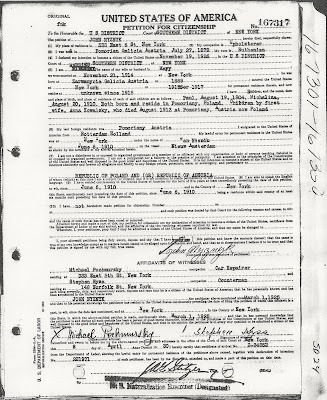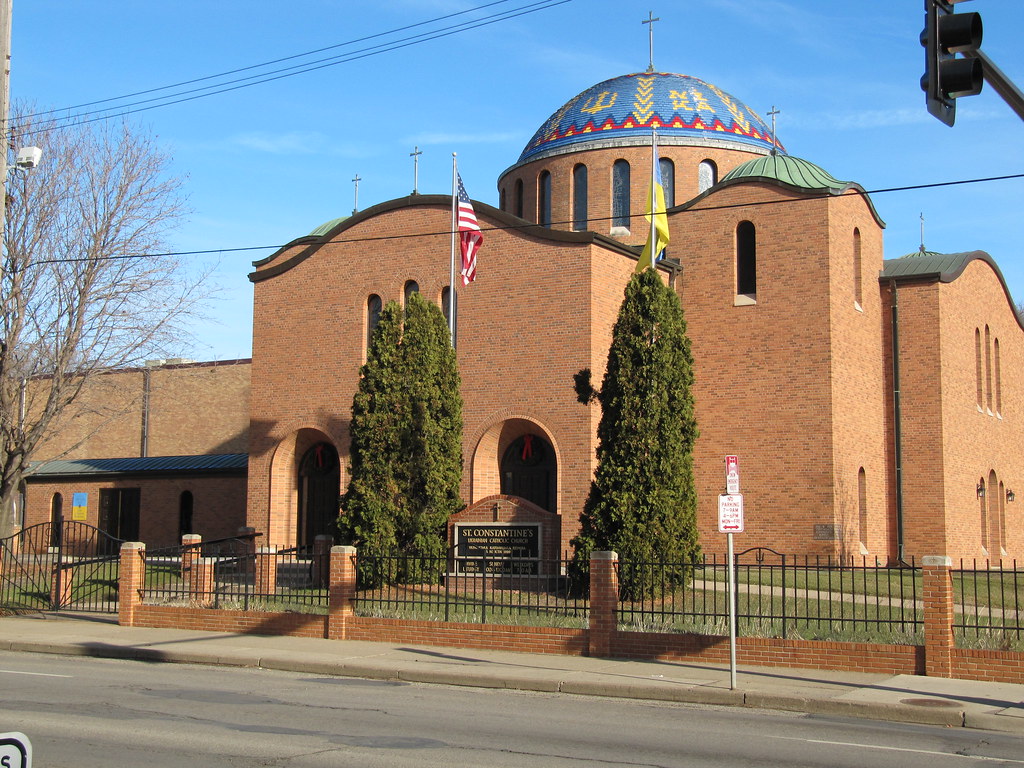 |
| John Nyznyk November, 1914. |
First of all, I found that he lived in New York City, a few blocks away from where my father lived with his mother and step-father. I had been told that he wasn't interested in working, but according to census information and his petition for citizenship, he had a job. He applied to become a US citizen and became one in the 1930.
Second, I found from his citizenship petition that he had two children that he left behind when he came to the United States. According to his marriage license information, his first wife died shortly after he immigrated here. His daughter, Michalina, was born in 1910, so she was an infant when he left.
 |
| John Nyznyk's petition for citizenship, showing the two children left behind in Europe. |
In 1931, his daughter Michalina came to the United States, and John Nyznyk was her sponsor. She settled in the Orange, New Jersey area and became a US citizen in 1939. In her petition for citizenship, she made no mention of her father. She changed her name legally to Mildred Nesnick when she finalized her filing for citizenship. At that time she was a live-in maid in New Jersey.
Although Michalina/Mildred was living in New Jersey, her father continued to live in New York City. According to the 1940 US Census, he was living in Manhattan, on East 6th Street, and had been unemployed for over a year. My mother told me that he had been asking relatives about my dad, and seemed to know that he had a job. He also thought that my father should be supporting him. Since my father had nothing to do with him since before 1920, he paid no attention to this. This was third hand information by the time I heard it, again, my mother was the source, not my father.
By the time I started my family history search, both of my parents has passed away. The only was that I was going to find any information about my grandfather was by looking for it on genealogy sites. I found the information about his other children, his daughter's immigration and citizenship from sources on Ancestry.com. It is not surprising that I found his death information on Ancestry.
My mother told me that he died and was buried in a charity cemetery. From this I assumed that he was indigent and was given a charity burial somewhere in the New York City area. I found an article about Harts Island in the New York Times, where the unclaimed dead and poor and indigent of New York were buried in mass graves. From this, I thought that Harts Island was were he ended up. I was going to pursue this avenue, as soon as I found the date of his death. I really didn't want to go through many roll of film records of the New York City death index, so I did nothing. One day a hint came up on Ancestry and I found the date of his death, June 6, 1950. I requested the death certificate and the detailed certificate of the cause of death.
So now I knew how his story ended. He was not indigent, he died at the Cancer Institute, Welfare Island of lung cancer. He was buried in a Catholic Cemetery on Long Island. The arrangements were made my the Jerema Funeral Home, not far from where he lived.
So John Nyznyk's mysterious life in no longer unknown.








.jpg)

